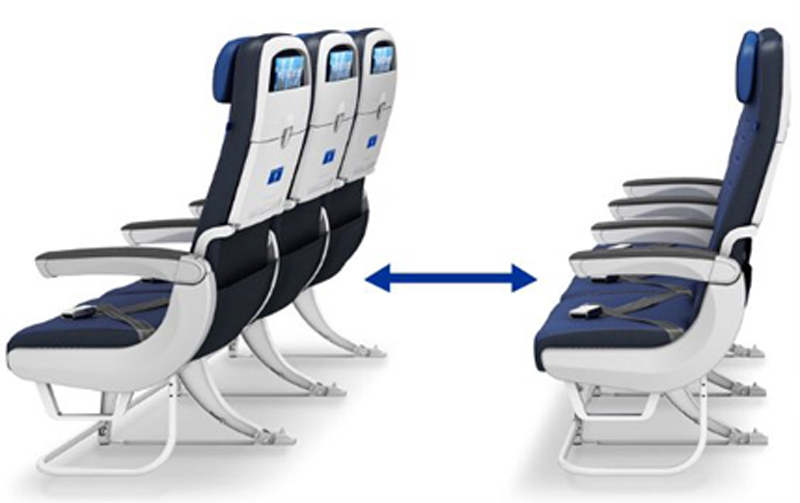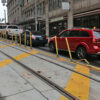Consumers have come to expect that the reality and actual experience of a product or service rarely matches the impression implied by advertising and marketing. Similar to the beginning of a serious relationship in which each participant is on his or her best behavior to impress the other person, so is the framing and presentation of what is being sold by a corporate entity…
Is This Advertisement For Economy Plus Seating Misleading?
…which brings us to an advertisement which included a photograph of the seating of the Economy Plus product of United Airlines as viewed by FlyerTalk member COEWR2587:

Regardless of the cost — which varies by flight — take a look at the photograph in the advertisement. Aside from the possibility of being seated in an exit row, the amount of pitch between seats is more specious than spacious.
If the route was between Newark and Cancún, would you pay $64.00 to enjoy that amount of leg room for the duration of the flight? If so, how would you feel if you paid for the upgrade — only to find that the room between seats is significantly more cramped?
Fast Food Advertisements as an Example?
Seeking something quick and inexpensive one night in Hawaii, I once walked into a Burger King restaurant on the island of Kauai and ordered a Whopper sandwich — and it was actually served to me by a member of the staff at the table at which I was sitting. That experience was memorable to me because it was the only time I have ever seen real food at a fast food establishment match the photographs which advertise it — and it was amongst the tastiest of fast foods which I have ever had.

This is how a Whopper sandwich is portrayed at the official Internet web site of Burger King. Look at the crisp, green lettuce leaves; those thick, crunchy pickle slices; the fresh red tomato enhanced with moisture droplets to indicate the peak of ripeness; and the flame-grilled hamburger patty which overflows outside of the circumference of both halves of the bun…

…and here is a Whopper sandwich which I purchased from a Burger King restaurant last year: a tired looking hamburger patty which is significantly smaller than the bun; pale tomatoes; and white lettuce leaves on a sandwich which is nowhere nearly as tall as advertised. Note the artistic way the ketchup was displayed on the heel of the bun. By the way, the sandwich contains extra pickles. Do you see any pickles? Could you imagine Burger King advertising a Whopper sandwich with the photograph shown above?
Although I do not eat fast food very often, years of disappointment with the food products for which I paid led to me being conditioned to expect little more than a way to satisfy my appetite until I was able to enjoy a better dining experience. In other words, I would be foolish to expect a fast food product to even remotely resemble its advertised brethren.
I have been to studios where food was photographed. Believe it or not, substitutes for parts or all of the food — sometimes inedible substances — are used instead of actual food primarily due to reasons of perishability and ease of propping. For example, plastic cubes are typically used because real ice cannot withstand the hot lights used in a photography shoot; and that is understandable…
Summary
…but can the same standards be applied to the aforementioned photograph used to illustrate the roominess of Economy Plus aboard airplanes operated by United Airlines — or are apples and oranges being compared? What if the advertisement was viewed by someone who rarely — or never before — traveled on an airplane operated by United Airlines; and that person truly believed that paying for the upgrade meant enjoying the amount of space as shown in the photograph?
Is the advertising for the Economy Plus product of United Airlines misleading? If so, is advertising in general misleading when reality is significantly different from the product or service advertised — and should such deception be considered illegal?
Source: United Airlines.

